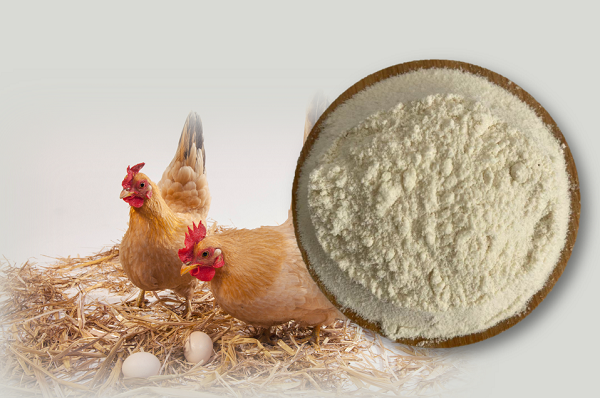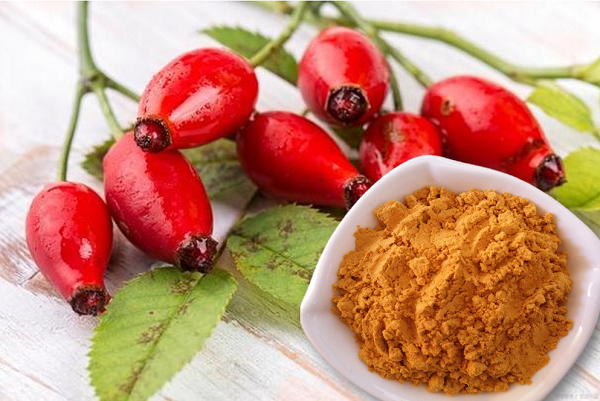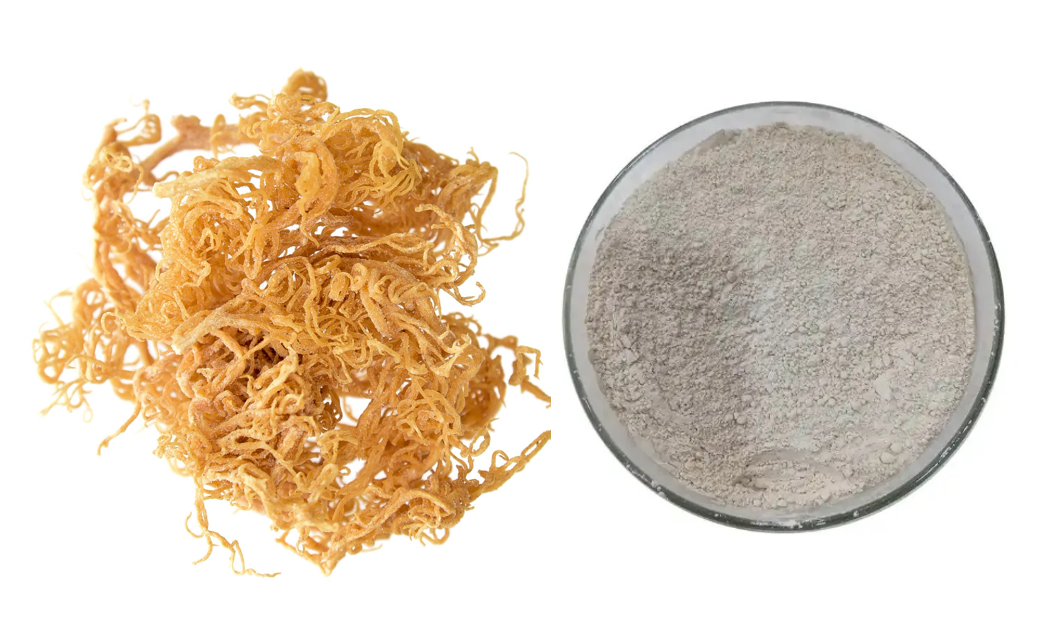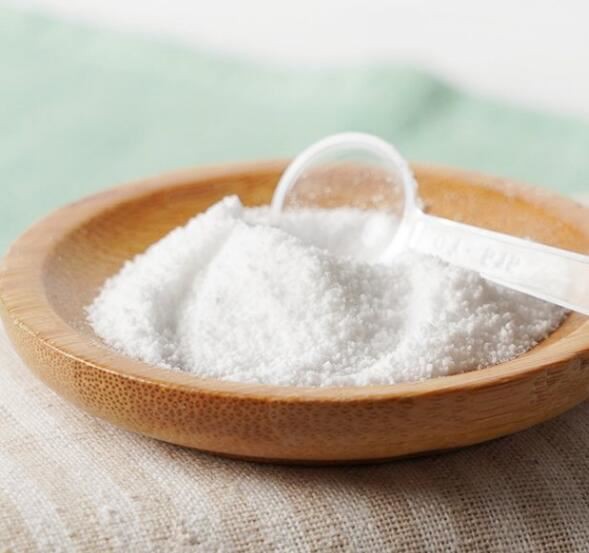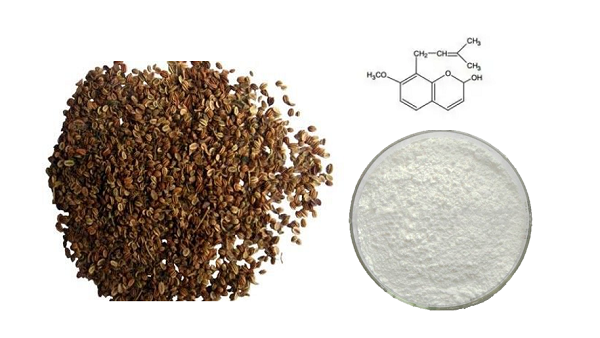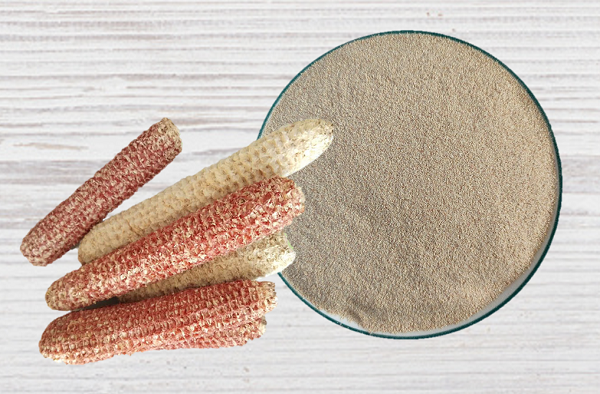Follow Us:
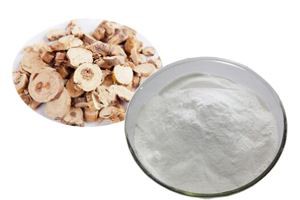
Botanical Pesticide – Matrine
What is Matrine?
Matrine is a naturally occurring heterocyclic compound derived from quinolizidine which is isolated from the roots of Sophora flavescens and Sophora alopecuroides. Matrine is known to have a wide range of medicinal activities like anti-cancer, anti-inflammatory, antimicrobial, antiviral, antifibrotic, and immunoinhibitory, etc. Matrine is one of the most used traditional medicines in China being used for the treatment of diseases such as cancer, viral hepatitis, colpitis, skin inflammation, etc.
Matrine is also a well-known botanical pesticide because of its broad spectrum insecticide activities, anti-plant virus activity and fungicidal activity as well as being friendly to the environment. Recent studies have shown the use of matrine in an isolated form or in a mixture with other botanical, synthetic and microbial pesticides to control different insect pests (termites, whiteflies, aphids, leaf hoppers, caterpillars and mites), fungal and bacterial diseases and nematodes in china. Matrine has been commercialized under different trade names; however, their insecticidal activities are lower than the popular insecticides introduced by international pesticide companies during the last few years. Based on the good biological activity and wide range it will be interesting to develop a practical strategy for preparation of insecticidal formulations in which matrine can be used in mixture with other natural pest control agents.
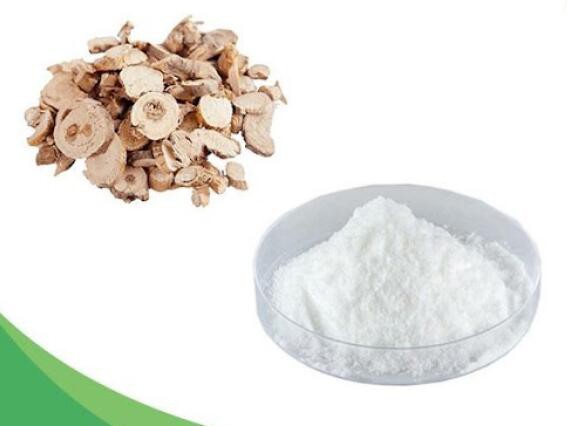
Matrine benefits
At present, a large number of studies have proved that matrine has an anticancer effect can inhibit cancer cell proliferation, arrest cell cycle, induce apoptosis, and inhibit cancer cell metastasis. It also has the effect of reversing anticancer drug resistance and reducing the toxicity of anticancer drugs.
1. Abolishes Pain
By acting on mu- (MOR) and kappa-opioid (KOR) receptors and endogenous endorphins (such as dynorphin A), matrine may be able to reduce pain. R R R
For example, in models of chronic constriction injury, matrine could reduce pain. R
Matrine derivatives (as opioid agonists) are currently be synthesized for trials to reduce pain. R R
Matrine can also ameliorate vincristine-induced painful neuropathy. R
Other studies matrine’s analgesic effects to be mediated by cholinergic and dopaminergic neurotransmission (muscarinic and D2). R
2. Reduces Allergies
By increasing TH2 cytokines and reducing IgE production, matrine may help with allergies. R
Matrine may also be useful for asthma. R
By downregulating Suppressor Of Cytokine Signaling 3 (SOCS3) expression, matrine can stop allergy-induced airway inflammation. R
3. May Help With Withdrawal
Matrine may help with overcoming opioid (morphine) withdrawal. R
4. Destroys Cancer
In China, matrine is used as a clinical drug to treat cancer – matrine was approved by the China State Food and Drug Administration (SFDA) for the treatment of cancer in 1992. R
By modulating the cell cycle (proliferation and apoptosis), matrine has may benefits combating cancer. R R R
Matrine can both induce both autophagy (cell recycling) and apoptosis (cell death). R R
Matrine has cancer fighting activity against:
Acute Myeloid and Lympoblastic Leukemias R R
Bladder Cancer (and can work synergistically with cisplatin) R R
Breast Cancer R R R
Cervical Cancer R R R
Cholangiocarcinoma R
Colon Cancer R R R R
Esophageal Cancer R
Gastric Cancer R R R R
Leukemia R
Liver Cancer R R R R R R
Lung Cancer R R R R
Medulloblastoma R R
Melanoma R R
Multiple Myeloma (works synergistically with arsenic trioxide) R
Nasopharyngeal Cancer R R
Neuroblastoma R
Osteosarcoma R
Pancreatic Cancer R R
Prostate Cancer R R R R
Retinoblastoma R
Rhabdomyosarcoma R
Matrine may help with chemoresistance. R R
Matrine may also help with multi-drug resistance in cancer. R
In cancer patients, matrine was shown to enhance the immune functions and thus improve the quality of life. R
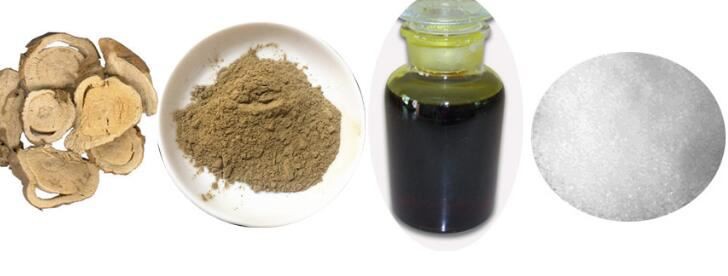
5. Combats Bone Loss
https://www.ncbi.nlm.nih.gov/pmc/articles/PMC5797611/
Post-Menopausal Osteoporosis (PMOP) is a metabolic bone disorder characterized by low bone mass and micro-architectural deterioration of bone tissue. R
By acting on Ribosomal Protein S5 (RPS5) and suppressing RANKL expression, matrine can suppress osteoclastogenesis and prevent PMOP-induced bone loss (in ovariectomized animal models). R R R
6. Helps Skin Inflammation
Matrine may be beneficial for inflammatory skin diseases (such as atopic dermatitis and eczema). R
By inhibiting expression of the Substance P (SP) on its receptor Neurokinin-1 (NK-1R), matrine can suppress proinflammatory cytokines (e.g. IL-1beta, IL-8 and MCP-1) in the skin. R
7. Produces Antioxidant Effects
Matrine can induce the activity of the transcription factor Nuclear Factor Erythroid 2-Related Factor 2 (Nrf2) which can upregulate many antioxidant and detoxification genes. R R
8. Protects The Liver
In the liver matrine can induce phase 1 detoxification enzymes (such as CYP2A6, CYP2B6 and CYP3A4) and reduce levels of reduced Lactate-Dehydrogenase (LDH) and Aspartate Aminotransferase (AST) levels. R
Matrine can also help with liver regeneration (by inducing replication of liver stem cells). R
When matrine is combined with Licorice (Glycyrrhetinic Acid), it has protective effects against acetaminophen-induced death/overdose. R
By activating RPS5 and reducing Monocyte Chemoattractant Protein-1 (MCP-1) activity, matrine can help prevent liver fibrosis. R R
It also helps prevent liver firbrosis by reducing Platelet-Derived Growth Factor (PDGF), Transforming Growth Factor Beta 1 (TGF-b1), and Epidermal Growth Factor Receptor (EGFR) expression. R R
Matrine can protect the liver from chronic Hepatitis B Virus (HBV) and damage from Toxoplasma gondii infection. R R
Matrine can prevent Nonalcoholic Steatohepatitis (NASH) development from consuming a High Fructose Diet (HFD). R
9. Has Antimicrobial Effects
Matrine has antibiotic effects against:
E. Coli R
Matrine has antiparasitic effects against:
Angiostrongylus cantonensis R
Dipylidium caninum R
Fasciola hepatica R
Toxoplasma gondii R
Matrine has anti-viral effects against:
Coxsackie Virus B3 (CVB3) R
Hepatitis B Virus (HBV) R R R R
Influenza Virus A/Hanfang/359/95 (H3N2) R
Porcine Circovirus Type 2 (PCV2) R
Porcine Reproductive Respiratory Syndrome Virus (PRRSV) R
Tobacco mosaic virus (TMV, useful for plants) R
Matrine has insecticidal/pesticidal effects against:
Bursaphelenchus xylophilus (pine wood nematode) R
Coptotermes formosanus (termite) R
10. Protects The Lungs
Matrine can protect against acute lung injury. R
For example, by inhibiting COX-2 and ICAM-1, matrine can suppress LPS-induced lung injury. R
11. May Combat Obesity
https://www.ncbi.nlm.nih.gov/pubmed/25417736/
Matrine may help obesity and food intake. R
For example, in obese rats, matrine can inhibit calorie intake and with weight loss. R
Simultaneously, it can reduce the content of blood glucose, serum FFAs, Alanine Aminotransferase (ALT) and MDA, increase total antioxidant capacity and improve blood lipid metabolism disorder. R
12. May Help Prevent Parkinson’s
Matrine may be beneficial for preventing Parkinson’s Disease (PD). R
For example, in PD animal models, matrine can protect against MPTP-induced dopaminergic neuron damage by increasing Glutathione (GSH), Superoxide Dismutase (SOD), Tyrosine Hydroxylase (TH), and NRF2. R
13. Protects The Brain During Stroke
Matrine may protect the brain from stroke-induced damage. R R
For example, in rats subjected to Hemorrhagic Stroke, matrine can protect brain cells from cell death and may improve Blood-Brain Barrier (BBB) disruption by reducing inflammation (via PI3K/Akt-mediated NF-κB inhibition and Keap1/Nrf2-dependent HO-1 induction). R
Similarly in Ischemic Stroke, matrine exerts neuroprotective effects by its antioxidant and anti-apoptotic properties. R
Matrine can improve survival rate of rats after Traumatic Brain Injury (TBI). R
14. Ameliorates Multiple Sclerosis
Matrine can ameliorate inflammation in Multiple Sclerosis (MS), decrease demylenation, in induce NRF2 in the brain. R R R R R
Matrine can also inhibit Nogo-A (a powerful way to induce neuronal regeneration) and increase Neurotrophin 3 (NT3) expression (a potent neurotrophic factor for promoting remyelination and recovery of neuronal function). R R
Matrine also promotes remylelination via the maturing of oligodendrocytes (via PI3K/Akt/mTOR signaling). R
Matrine can also help microglia cells turn from a M1 (inflammatory state) into M2 (anti-inflammatory state). R
Matrine also combats excitotoxicity in MS by downregulating glutamate and upregulating GABA levels, as well as enhancing expression of glutamate transporters (GLT-1 and GLAST). R
15. Protects Vascular Function
By activating HSP70, matrine can protect the heart from hypoxic injury. R
Matrine can protect against heart attack (via inhibition of RhoA/ROCK1). R
In clinics, matrine is currently used to treat cardiac arrhythmias, especially premature ventricular beats. R R R
Matrine can protect the vascular system from oxidative stress. R R
For example, matrine protects endothelial cells from Advanced Glycation Endproduct (AGE)-induced damage. R
By reducing ROS levels, TLR-4/MyD-88 expression, and TGF‑β/Smad expression, matrine can protect against fibrosis of the heart. R R
Matrine may also help prevent atherosclerosis by inhibiting the expression of Vascular Cell Adhesion Molecule‑1 (VCAM‑1) and Intercellular Adhesion Molecule‑1 (ICAM‑1). R
16. Ameliorates Arthritis
Marine can ameliorate Arthritis. R R
For example, in Osteoarthritis (OA), matrine can reduce Matrix Metalloproteinases (MMPs), which degrade the extracellular matrix and facilitate chondrocyte apoptosis. R
In Rheumatoid Arthritis (RA), matrine can improve inflammation by reducing the levels of Th1 cytokines (e.g. IFN-γ, TNF-α, IL-1β), but increasing Th2 cytokines (e.g. IL-4 and IL-10). R
17. Fights Alzheimer’s Disease
Matrine may help fight Alzheimer’s Disease (AD). R R
It can inhibit the accumulation of Amyloid-Beta (AB) plaque in the brain. R
Matrine can improve cognitive impairment in mice with AB-induced AD (by lowering high Th17 cytokines and increasing Treg cytokines). R
Also in AD mice, matrine can increase spatial learning and memory retention. R
Matrine may also protect the hippocampus from AB-induced damage. R
18. Helps Treat Endotoxemia
Matrine may be useful for treatment of sepsis. R
In models of lethal sepsis, matrine can prolong survival, attenuate inflammation, and reduce organ injury. R
Matrine can also reduce endotoxemia in:
Dendritic cells (bone marrow) R
Gut Lining R
Lungs R R
19. Strengthens The Gut
In the gut, matrine can reduce inflammation (downregulates IL-1β, IL-17, TNF-α). R
It also improves antioxidant levels in the gut (increases SOD, T-AOC). R
Matrine may also be useful for Inflammatory Bowel Diseases (IBD) such as Ulcerative Colitis (UC). R R
For example, in IL-10 deficient mice, matrine can ameliorate spontaneously developed chronic colitis. R
20. Combats Eye Inflammation
Matrine may be a safer ocular anti-inflammatory agent than corticosteroids. R
21. Helps With Diabetes Treatment
Matrine may be useful in the treatment of diabetes. R
Matrine can protect against damage from AGEs (oxidized metabolites from high blood sugar). R
Also matrine can ameliorate Hyperglycaemia and Insulin resistance from a high-fructose diet. R
Similarly to Metformin, matrine can reduce glucose intolerance and plasma insulin level, hepatic triglyceride content and fat accumulation in high-fat-fed mice without affecting caloric intake. R
Matrine can prevent fibrosis of the heart in those with diabetic cardiomyopathy (via inhibiting ATF6 signaling). R
22. Protects Against Proteopathy
Matrine can regulate stress in the Endoplasmic Reticulum (ER) and may help prevent Proteopathy and induce autophagy. R
23. Improves Sleep
Matrine may useful as a hypnotic for sleep. R
It can also promote REM and NREM sleep by promoting Serotonin (5-HT) neurotranmission in the Ventrolateral Preoptic Nucleus (VLPO), a sleep promoting region. R
Matrine can also normalize hyperactivity from caffeine. R
24. Quenches Neuroinflammation And Grows The Brain
Matrine can help with neuroinflammation. R
More specifically, matrine reduces the expression of Heat Shock Protein 60 (HSP60) release (binding to TLR4) from microglia after being subjected to LPS-induced inflammation. R
Matrine can also combat neuroinflammation by reducing expression of β-amyloid (Aβ) and B-site APP Cleaving Enzyme 1 (BACE-1). R
It can improve brain growth by increasing expression of Brain-Derived Neurotrophic Factor (BDNF), Nerve Growth Factor (NGF), and Neurotrophin Receptor p75 (NTR). R R
25. Reduces Seizures
Matrine may be useful for epilepsy. R
By increasing GABA activity and reducing Glutamate activity, matrine helps reduce seizures. R
26. May Combat EMF-Induced Side Effects
Matrine has benefits protecting against Electromagnetic Fields (EMFs). R
For example, mice subjected to a Traumatic Brain Injury (TBI) that had taken matrine had reduced signs of radiation sickness and improved survival rates from radiotherapy. R
27. Protects The Kidneys
Matrine can protects the kidneys from Adriamycin (ADR)-Induced Nephropathy (AIN). R
Matrine can also inhibit cyclosporine A-induced nephrotoxicity. R
Matrine is a highly polar basic compound and used in the treatment of hepatitis and hepatic fibrosis in China for a long time with low toxicity21. Recently, the anticancer effects of matrine have become attractive for its broad anticancer spectrum and good safety
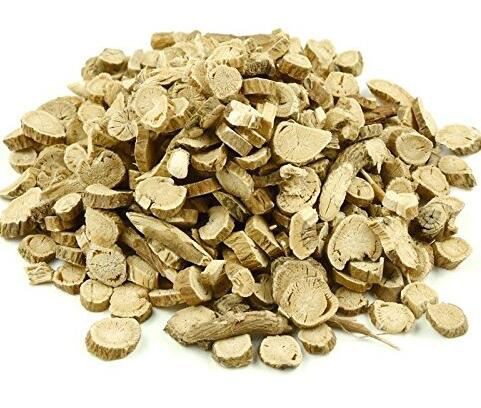
Is matrine safe
Matrine is a highly polar basic compound and used in the treatment of hepatitis and hepatic fibrosis in China for a long time with low toxicity21. Recently, the anticancer effects of matrine have become attractive for its broad anticancer spectrum and good safety22,23,24. Besides, clinical studies have demonstrated that the quality of life and immune function of cancer patients were largely improved by combining standard therapies with the use of matrine25,26. However, the low bioavailability of matrine has limited its use as an anticancer drug. In virtue of its favorable safety and low bioactivity, we designed and synthesized 17 matrine derivatives bearing benzo-α-pyrone structure which appears as a core skeleton in many anticancer compounds17.
The results of in vitro cytotoxic activity assays indicated that most of the target compounds showed improved anticancer effects with IC50 15~484 times lower than that of matrine in four tested human cancer cell lines (Table 1). Compound 5i exhibited the most potent anticancer effects. Moreover, compound 5i inhibited lung cancer cell proliferation in vitro and in vivo (Fig. 2a, Fig. S2a, and Fig. 5a,b). Interestingly, in our previous study, we discovered that matrine derivative 6i bearing p-methoxyphenyl structure also showed strong anticancer effect in A549 lung cancer cell lines (IC50 = 1.6 μM), but displayed toxicity in the in vivo mouse model.
Compared with 6i, compound 5i of this study displayed no obvious side effects reflected by body weight loss and ALT, AST and Cr detection (Fig. 5c,f–h). These results implied that compound 5i displayed advantage in drug safety and druggable potential.
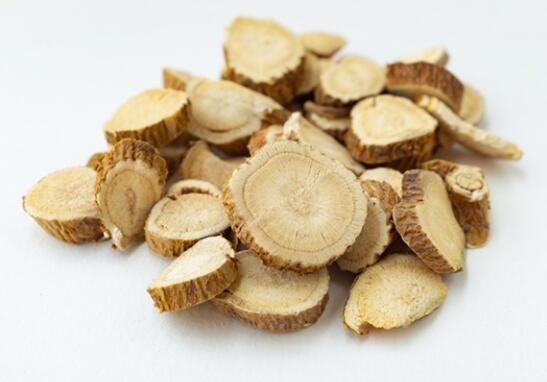
What does matrine do?
Matrine is an alkaloid isolated from the traditional Chinese medicine Sophora flavescens Aiton. At present, a large number of studies have proved that matrine has an anticancer effect can inhibit cancer cell proliferation, arrest cell cycle, induce apoptosis, and inhibit cancer cell metastasis.
FOR matrine, please contact us at email:info@greenagribio.com
References:https://www.frontiersin.org/articles/10.3389/fmicb.2019.01812/full
https://mybiohack.com/blog/matrine-benefits-masm-ku-shen-sources
https://www.nature.com/articles/srep35918













